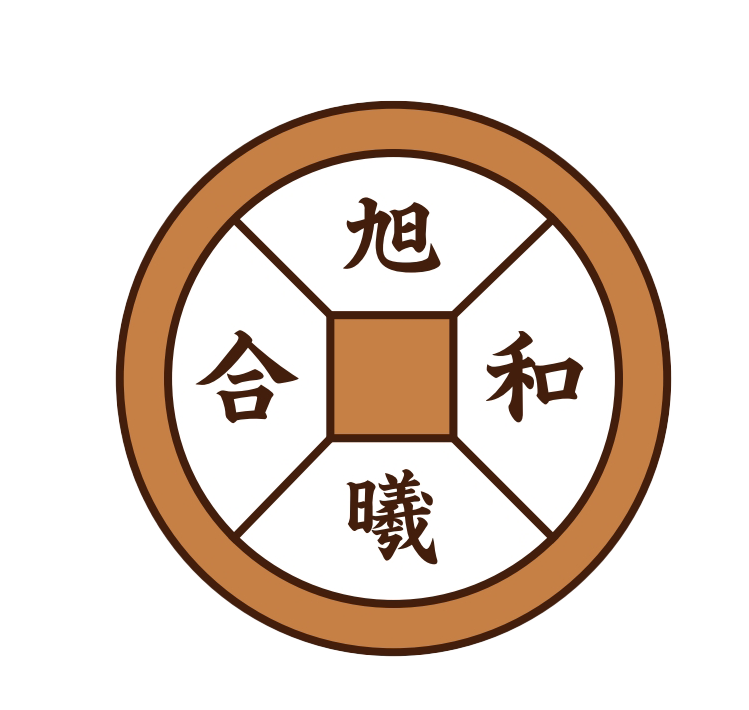ทำความเข้าใจความแตกต่างระหว่างชุดกาแฟเซรามิกและสโตนแวร์
นิยามของเซรามิกและสโตนแวร์ในบริบทของชุดกาแฟ
เซรามิกหมายถึงภาชนะที่ทำจากดินเผาทุกชนิด ในขณะที่สโตนแวร์เป็นเซรามิกประเภทหนึ่งที่ทนทานมากกว่าและเผาที่อุณหภูมิสูงกว่า ชุดกาแฟเซรามิกทั่วไปมักใช้ดินเผาเอิร์ธเทนแวร์ ขณะที่สโตนแวร์ใช้ดินขาว (คาโอลิน) และเฟลด์สปาร์เพื่อเพิ่มความหนาแน่น องค์ประกอบนี้ทำให้แก้วสโตนแวร์มีความต้านทานต่อการแตกร้าวมากกว่าถึง 23% เมื่อเทียบกับการศึกษาทางวิทยาศาสตร์วัสดุ
ความแตกต่างหลักในการผลิตที่มีผลต่อประสิทธิภาพของชุดกาแฟ
สโตนแวร์จะผ่านกระบวนการเปลี่ยนเป็นแก้ว (vitrification) ที่อุณหภูมิ 1200°C–1300°C เมื่อเทียบกับเซรามิกที่เผาที่ช่วงอุณหภูมิ 900°C–1100°C กระบวนการนี้สร้างโครงสร้างที่ไม่พรุน ซึ่งป้องกันการดูดซึมกลิ่นรสในถ้วยกาแฟ—ซึ่งเป็นปัจจัยสำคัญที่ได้รับการยืนยันจากการวิเคราะห์การผลิตล่าสุด อีกทั้งกระบวนการที่ใช้อุณหภูมิสูงยังทำให้อนุภาคของสโตนแวร์หดตัวลง 15–20% ช่วยเพิ่มความแข็งแรงทนทานสำหรับการใช้งานประจำวัน
อุณหภูมิการเผาแยกประเภทสโตนแวร์ออกจากเซรามิกชนิดอื่น
ความร้อนขั้นสูงที่ใช้กับสโตนแวร์กระตุ้นให้เกิดการเปลี่ยนแปลงทางเคมีที่ไม่สามารถเกิดขึ้นได้ในเซรามิกทั่วไป เมื่ออุณหภูมิเตาเผาเกิน 1200°C ซิลิกาจะหลอมละลายอย่างสมบูรณ์ สร้างโครงข่ายคล้ายแก้ว ทำให้ถ้วยสโตนแวร์มีความเสี่ยงต่อความเสียหายจากความร้อนแบบฉับพลันลดลง 30% ความแตกต่างพื้นฐานเหล่านี้ช่วยกำหนดเกณฑ์การคัดเลือกสำหรับผู้ซื้อที่ให้ความสำคัญกับความทนทานมากกว่าต้นทุน
ความทนทานและการทำงานระยะยาวของชุดกาแฟ: สโตนแวร์ เทียบกับ เซรามิก
ความต้านทานต่อแรงกระแทกและการป้องกันการแตกร้าวในถ้วยกาแฟสโตนแวร์
สโตนแวร์มีความทนทานได้อย่างไร? เริ่มต้นจากกระบวนการผลิตที่ใช้อุณหภูมิสูงมากถึง 1300 ถึง 1400 องศาเซลเซียส ส่วนผสมของดินที่ใช้มีส่วนประกอบพิเศษสองอย่างคือ เกาลิน และเฟลด์สปาร์ ซึ่งช่วยเพิ่มความแข็งแรงให้กับวัสดุ เมื่อพิจารณาในเชิงวิทยาศาสตร์ วัสดุเหล่านี้สร้างโครงสร้างโมเลกุลที่แน่นหนามากขึ้น การทดสอบโดยสถาบัน Clayworks Institute ยืนยันว่า สโตนแวร์สามารถทนต่อแรงกระแทกได้ดีกว่าถ้วยเซรามิกทั่วไปถึง 22 เปอร์เซ็นต์เมื่อทำหล่น การยืนยันจากภาคปฏิบัติเกิดขึ้นในครัวเชิงพาณิชย์ โดยพ่อครัวสังเกตเห็นสิ่งที่น่าสนใจ ในช่วงสามปีที่ผ่านมา ร้านอาหารที่ใช้ภาชนะสโตนแวร์มีจำนวนชิ้นที่แตกหรือแตกร้าวและจำเป็นต้องเปลี่ยนใหม่น้อยลงประมาณ 42% เมื่อเทียบกับเซรามิกชนิดอื่น ซึ่งแปลเป็นการประหยัดจริงสำหรับเจ้าของธุรกิจที่ต้องเผชิญกับรอบการล้างจานอย่างต่อเนื่อง
ข้อกังวลเกี่ยวกับความเปราะบางของชุดกาแฟเซรามิกแบบดั้งเดิม
อุณหภูมิการเผาที่ต่ำกว่า (600°C–1,000°C) ทำให้ถ้วยเซรามิกแบบดั้งเดิมมีรูพรุนมากขึ้น ซึ่งก่อให้เกิดจุดอ่อนทางโครงสร้าง ข้อมูลจากอุตสาหกรรมแสดงให้เห็นว่าชุดเซรามิกมีแนวโน้มเกิดรอยแตกร้าวเล็กๆ จากการล้างในเครื่องล้างจานตามปกติมากกว่าสโตนแวร์ถึง 2.8 เท่า กว่า 63% ของผู้ใช้งานในครัวเรือนเปลี่ยนถ้วยเซรามิกทุกปีเนื่องจากแตกหรือร้าว เทียบกับ 24% สำหรับผู้ใช้สโตนแวร์
การเปรียบเทียบความเสื่อมสภาพในระยะยาว: สโตนแวร์ เทียบกับ เซรามิกทั่วไป
| สาเหตุ | สโตนแวร์ (ใช้งาน 5 ปี) | เซรามิก (ใช้งาน 5 ปี) |
|---|---|---|
| การสูญเสียความสมบูรณ์ของเคลือบ | 12% | 38% |
| การลดลงของน้ำหนัก | 0.5% | 2.1% |
| รอยร้าวจากความร้อน | 0.3/cm² | 1.8/cm² |
พื้นผิวที่ผ่านการเปลี่ยนเป็นแก้วของสโตนแวร์ทนต่อการเสียดสีในชีวิตประจำวันได้ดีกว่า โดยยังคงความเงางามไว้ได้ 89% หลังผ่านการล้างในเครื่องล้างจาน 500 รอบ เทียบกับ 54% สำหรับเซรามิก (รายงานความทนทานของภาชนะสำหรับอาหาร 2022)
อัตราการแตกหักในการใช้งานในครัวเรือนและสถานประกอบการบริการกาแฟ
ร้านกาแฟเชิงพาณิชย์ที่ใช้เซรามิกสโตนแวร์มีรายงานการแตกหัก 19 ครั้งต่อการใช้งาน 1,000 ครั้ง เมื่อเทียบกับเครื่องปั้นดินเผาทั่วไปที่มีถึง 67 ครั้ง ซึ่งหมายถึงค่าใช้จ่ายในการเปลี่ยนอุปกรณ์ลดลง 71% ในครัวเรือน สโตนแวร์มีผนังหนาและน้ำหนักที่สมดุลมากขึ้น ส่งผลให้อุบัติเหตุทำตกโดยไม่ได้ตั้งใจลดลง 40% ตามการศึกษาพฤติกรรมผู้บริโภค (Beverageware Safety Consortium 2023)
การเก็บความร้อนและความต้านทานต่อการแตกจากความร้อนในถ้วยกาแฟ
มวลความร้อนและการเป็นฉนวน: เหตุใดสโตนแวร์จึงรักษาความร้อนได้นานกว่า
สโตนแวร์มีเนื้อดินแน่นและผ่านการเผาที่อุณหภูมิสูง (1,200°C–1,300°C) ทำให้มีมวลความร้อนสูงกว่า ซึ่งช่วยให้ถ้วยสโตนแวร์สามารถดูดซับและกระจายความร้อนได้อย่างสม่ำเสมอ ทำให้รักษาระดับอุณหภูมิของกาแฟได้นานกว่าถ้วยเซรามิกแบบบางถึง 15–20 นาที ความพรุนต่ำของสโตนแวร์ทำหน้าที่เป็นฉนวนตามธรรมชาติ ช่วยคงอุณหภูมิการดื่มที่เหมาะสม (70°C–80°C)
การเปรียบเทียบทางวิทยาศาสตร์ระหว่างการเก็บความร้อนของเซรามิกกับสโตนแวร์
| คุณสมบัติ | Stoneware | เซรามิกทั่วไป |
|---|---|---|
| ระยะเวลาการเก็บความร้อน | 45-60 นาที | 30 - 40 นาที |
| ความนำความร้อน | 2.1 W/mK | 3.8 W/mK |
| ความทนทานต่อการกระแทกทางความร้อน | สูง (150°C̈) | ปานกลาง (80°C̈) |
ข้อมูลจากรายงานประสิทธิภาพวัสดุปี 2023 ยืนยันว่าสโตนแวร์มีอัตราการเย็นตัวช้ากว่า 25% ทำให้เหมาะสำหรับเครื่องดื่มที่ดื่มช้า
ประสบการณ์ผู้ใช้: การรักษาความร้อนของกาแฟในถ้วยประเภทต่างๆ
ผู้ดื่มกาแฟรายงานว่าถ้วยสโตนแวร์สามารถรักษาระดับความร้อนแบบ "เพิ่งเท" ได้ตลอดปริมาณ 12 ออนซ์ ในขณะที่ผู้ใช้ถ้วยเซรามิกมักจำเป็นต้องอุ่นใหม่ การทดสอบภายใต้สภาวะควบคุมพบว่า สโตนแวร์สามารถคงอุณหภูมิของของเหลวไว้เกิน 65°C ได้นาน 55 นาที เทียบกับ 35 นาทีในถ้วยเซรามิก ซึ่งเป็นความแตกต่างที่สำคัญในระหว่างกิจวัตรยามเช้าที่ใช้เวลานาน
ความเสี่ยงของการแตกร้าวจากแรงกระแทกจากความร้อนในถ้วยเซรามิกและสโตนแวร์
ตามรายงานการศึกษาเรื่องความต้านทานแรงกระแทกจากความร้อนปี 2024 พบว่าความล้มเหลวจากแรงกระแทกจากความร้อนเกิดขึ้นในสโตนแวร์น้อยลง 40% สโตนแวร์เคลือบสามารถทนต่อการเปลี่ยนแปลงอุณหภูมิอย่างฉับพลันได้ถึง 140°C (เช่น การย้ายจากเครื่องล้างจานไปไมโครเวฟ) ในขณะที่เซรามิกทั่วไปจะแตกร้าวที่ 90°C̈ การอุ่นถ้วยเซรามิกล่วงหน้าช่วยลดการแตกหักได้ 60%
คุณภาพของเคลือบและการมีบทบาทในการป้องกันความเครียดจากความร้อน
ชั้นเคลือบที่สมบูรณ์แบบช่วยป้องกันการแตกร้าวเล็กจิ๋วในบริเวณที่มีความเครียดจากความร้อนสูง ส่วนผสมเคลือบเซรามิกคุณภาพสูงจะขยายและหดตัวในอัตราที่ใกล้เคียงกับเนื้อดินมาก ทำให้สามารถทนต่อการเปลี่ยนแปลงอุณหภูมิได้มากกว่า 500 รอบโดยไม่เกิดรอยแตกลาย ในขณะที่เซรามิกที่เคลือบคุณภาพต่ำจะเริ่มปรากฏรอยแตกร้าวจากแรงเครียดอย่างเห็นได้ชัดหลังจากรอบที่ 50 เท่านั้น ซึ่งส่งผลต่อความแข็งแรงและการใช้งานระยะยาว
การออกแบบ การใช้งาน และการประยุกต์ใช้ชุดกาแฟ
น้ำหนักและสรีรศาสตร์: น้ำหนักของสโตนแวร์เทียบกับความเบาของเซรามิก
ชุดถ้วยกาแฟจากสโตนแวร์มักจะมีน้ำหนักมากกว่าเซรามิกประมาณ 20 ถึง 30 เปอร์เซ็นต์ เนื่องจากทำมาจากดินที่มีความหนาแน่นสูงกว่า ผู้คนจำนวนมากชอบความรู้สึกที่หนักมือนี้ และจากการสำรวจล่าสุดพบว่าประมาณ 58% ของผู้ที่ชื่นชอบกาแฟพิเศษชอบการใช้ถ้วยที่มีน้ำหนักมากกว่าเมื่อดื่มเครื่องดื่มร้อนๆ ในทางกลับกัน ถ้วยเซรามิกมีน้ำหนักเบากว่ามาก โดยทั่วไปอยู่ที่ประมาณ 8 ถึง 12 ออนซ์ต่อใบ ทำให้จับได้ง่ายและไม่เมื่อยมือหรือข้อมือ โดยเฉพาะอย่างยิ่งสำหรับผู้ที่ทำงานในสำนักงานและจำเป็นต้องจิบกาแฟหลายถ้วยตลอดทั้งวันโดยไม่รู้สึกเมื่อยล้าหรือปวดเมื่อย
ความปลอดภัยในการใช้เครื่องล้างจานและไมโครเวฟสำหรับชุดถ้วยกาแฟเซรามิกและสโตนแวร์
สโตนแวร์รุ่นใหม่แสดงผลการทดสอบทนต่อเครื่องล้างจานได้ 94% จากการทดสอบความทนทานของวัสดุปี 2023 โดยมหาวิทยาลัยอัลเฟรด เมื่อเทียบกับเซรามิกแบบดั้งเดิมที่อยู่ที่ 82% วัสดุทั้งสองชนิดสามารถใช้กับไมโครเวฟได้โดยทั่วไป แต่เคลือบเซรามิกเสื่อมสภาพเร็วกว่า—มีถ้วยเซรามิก 34% ที่สูญเสียความเงางามหลังจากใช้ไมโครเวฟเกิน 100 รอบ เทียบกับสโตนแวร์ที่มีเพียง 12%
ความหลากหลายในการออกแบบ: การแสดงออกทางศิลปะในเซรามิก เทียบกับสโตนแวร์แบบมินิมัลลิสต์
พื้นผิวบิสก์ที่มีรูพรุนของเซรามิกช่วยให้สามารถวาดลวดลายด้วยมือได้อย่างละเอียด ซึ่งเป็นที่นิยมของผู้ใช้งานในครัวเรือน 71% ตามการสำรวจของสมาคมงานฝีมือและงานอดิเรก (ปี 2024) โครงสร้างที่กลายเป็นแก้วของสโตนแวร์จำกัดความหลากหลายของสี แต่ให้ดีไซน์แนวอุตสาหกรรมที่ดูทันสมัย ซึ่งผู้ประกอบการร้านกาแฟ 63% ชื่นชอบ เพื่อให้บริการชุดภาชนะบนโต๊ะที่มีความกลมกลืนกัน
ความเหมาะสมในการใช้งานในบ้าน สำนักงาน และร้านกาแฟ
ร้านอาหารรายงานว่ามีค่าใช้จ่ายในการเปลี่ยนชุดภาชนะรายปีต่ำกว่า 40% เมื่อใช้สโตนแวร์ (กลุ่มวิจัยธุรกิจบริการ ปี 2023) ในขณะที่ชุดเซรามิกครองตลาดครัวเรือน 78% เนื่องจากเก็บรักษาง่าย ผู้จัดการสำนักงานนิยมใช้เซรามิกในห้องพักผ่อน (เฉลี่ยชุดละ 2.3 ปอนด์ เทียบกับสโตนแวร์ที่ 3.8 ปอนด์) โดยให้ความสำคัญกับการใช้พื้นที่อย่างมีประสิทธิภาพมากกว่าสมรรถนะด้านความร้อน
การเลือกชุดกาแฟที่ดีที่สุดตามความต้องการของคุณ
สำหรับผู้ใช้งานที่บ้าน: ให้ความสำคัญกับความทนทานและการดูแลรักษาง่าย
ชุดกาแฟที่ทำจากสโตนแวร์มักจะมีอายุการใช้งานที่ยาวนานกว่าเซรามิกทั่วไปในชีวิตประจำวัน การทดสอบบางอย่างพบว่ามีรอยแตกร้าวน้อยลงประมาณ 24 เปอร์เซ็นต์หลังจากใช้งานห้าปี ตามรายงานการศึกษาที่ตีพิมพ์ในวารสาร Materials Science Journal เมื่อปี ค.ศ. 2023 เหตุผลก็คือ สโตนแวร์มีโครงสร้างที่แน่นหนามากกว่า จึงทนต่อการล้างในเครื่องล้างจานซ้ำๆ ได้ดีกว่า อย่างไรก็ตาม เซรามิกมีน้ำหนักเบากว่า จึงเหมาะสำหรับผู้ที่ต้องอุ่นเครื่องดื่มในไมโครเวฟบ่อยครั้ง เมื่อพิจารณาจากพฤติกรรมการใช้งานจริง ผู้คนส่วนใหญ่มักเลือกสโตนแวร์เมื่อเปลี่ยนแก้วเก่า โดยประมาณสองในสามของครัวเรือนที่สำรวจระบุว่าชอบสโตนแวร์เพราะแตกหักได้ยากกว่า และรักษาอุณหภูมิความร้อนของเครื่องดื่มได้นานกว่า
สำหรับคนรักกาแฟ: การถ่วงดุลระหว่างความหลากหลายทางด้านดีไซน์และความสามารถในการใช้งาน
ชุดเซรามิกฝีมือศิลปินมีความหลากหลายของเคลือบและรูปร่างมากกว่าสโตนแวร์ถึงห้าเท่า จึงดึงดูดใจนักสะสมและผู้ใช้งานที่ให้ความสำคัญกับดีไซน์ อย่างไรก็ตาม สโตนแวร์ทำจากดินเหนียวที่อุดมไปด้วยแร่ธาตุ ซึ่งมีความเสถียรทางความร้อนได้ดีเยี่ยม (สามารถคงอุณหภูมิไว้ที่ 180°F–200°F ได้นานกว่า 45 นาที) ทำให้เหมาะกับวิธีการชงกาแฟเฉพาะทาง เช่น การชงแบบเพอร์โอเวอร์ หรือเฟรนช์เพรส
สำหรับการใช้งานเชิงพาณิชย์: สโตนแวร์ เทียบกับ เซรามิก ในบริบทความต้องการของร้านกาแฟ
ครัวเชิงพาณิชย์รายงานว่ามีค่าใช้จ่ายในการเปลี่ยนอุปกรณ์ต่ำกว่า 42% เมื่อใช้สโตนแวร์ เนื่องจากทนต่อการเปลี่ยนแปลงอุณหภูมิอย่างฉับพลันจากการล้างซ้ำๆ ได้ดี ในขณะที่เซรามิกมีการระบายความร้อนเร็วกว่า อาจเหมาะกับบาร์เอสเพรสโซที่เสิร์ฟเครื่องดื่มขนาดสั้น แต่ความเปราะบางของเซรามิกทำให้มีอัตราการแตกหักต่อปีสูงเป็นสามเท่าในร้านกาแฟที่มีลูกค้าหนาแน่น
ต้นทุน ความทนทาน และดีไซน์: การเลือกลงทุนอย่างเหมาะสมสำหรับชุดกาแฟ
แม้ว่าชุดเซรามิกสโตนแวร์จะมีราคาสูงกว่า 20–30% ในตอนแรก แต่อายุการใช้งานที่ 8–10 ปี เมื่อเทียบกับเซรามิกทั่วไปที่ 3–5 ปี ทำให้สโตนแวร์คุ้มค่ามากกว่าในระยะยาว เลือกเซรามิกหากคุณต้องการลวดลายตามฤดูกาลและการจัดเก็บที่สะดวก; เลือกสโตนแวร์เมื่อเน้นความทนทานแบบมินิมอลและขอบที่ไม่มีเคลือบซึ่งกันคราบได้ดีสำหรับการใช้งานประจำวัน
คำถามที่พบบ่อย
ข้อแตกต่างหลักระหว่างชุดกาแฟเซรามิกกับสโตนแวร์คืออะไร
ข้อแตกต่างหลักอยู่ที่อุณหภูมิในการเผาและองค์ประกอบของวัสดุ สโตนแวร์ถูกเผาที่อุณหภูมิสูงกว่า และผลิตจากดินขาว (คาโอลิน) และเฟลด์สปาร์ ซึ่งทำให้มีความหนาแน่นและทนทานมากกว่าเซรามิกทั่วไป
แก้วกาแฟสโตนแวร์ทนทานกว่าเซรามิกหรือไม่
ใช่ แก้วสโตนแวร์มีความทนทานมากกว่าเนื่องจากมีโครงสร้างที่แน่นกว่า ทำให้เสี่ยงต่อการแตกร้าวน้อยกว่าเมื่อเทียบกับแก้วเซรามิก
สามารถใช้ชุดกาแฟทั้งเซรามิกและสโตนแวร์ในไมโครเวฟและเครื่องล้างจานได้หรือไม่
ทั้งสองชนิดสามารถใช้ในไมโครเวฟและเครื่องล้างจานได้ แต่สโตนแวร์โดยทั่วไปทนต่อสภาวะเหล่านี้ได้ดีกว่าในระยะยาว รักษารูปลักษณ์ของเคลือบผิวไว้ได้ดี และลดความมันวาวน้อยกว่า
วัสดุใดเก็บความร้อนได้ดีกว่ากัน: สโตนแวร์หรือเซรามิก?
สโตนแวร์มีความสามารถในการเก็บความร้อนได้ดีกว่าเนื่องจากเนื้อดินที่แน่นหนา ทำให้สามารถรักษุอุณหภูมิของกาแฟได้นานกว่าเมื่อเทียบกับเซรามิก
มีความแตกต่างด้านต้นทุนอย่างมีนัยสำคัญระหว่างชุดถ้วยกาแฟเซรามิกและสโตนแวร์หรือไม่?
สโตนแวร์มักมีราคาสูงกว่าเซรามิกประมาณ 20%–30% แต่มีอายุการใช้งานที่ยาวนานกว่า ทำให้มีประสิทธิภาพด้านต้นทุนมากกว่าในระยะยาว
สารบัญ
- ทำความเข้าใจความแตกต่างระหว่างชุดกาแฟเซรามิกและสโตนแวร์
- ความทนทานและการทำงานระยะยาวของชุดกาแฟ: สโตนแวร์ เทียบกับ เซรามิก
-
การเก็บความร้อนและความต้านทานต่อการแตกจากความร้อนในถ้วยกาแฟ
- มวลความร้อนและการเป็นฉนวน: เหตุใดสโตนแวร์จึงรักษาความร้อนได้นานกว่า
- การเปรียบเทียบทางวิทยาศาสตร์ระหว่างการเก็บความร้อนของเซรามิกกับสโตนแวร์
- ประสบการณ์ผู้ใช้: การรักษาความร้อนของกาแฟในถ้วยประเภทต่างๆ
- ความเสี่ยงของการแตกร้าวจากแรงกระแทกจากความร้อนในถ้วยเซรามิกและสโตนแวร์
- คุณภาพของเคลือบและการมีบทบาทในการป้องกันความเครียดจากความร้อน
- การออกแบบ การใช้งาน และการประยุกต์ใช้ชุดกาแฟ
-
การเลือกชุดกาแฟที่ดีที่สุดตามความต้องการของคุณ
- สำหรับผู้ใช้งานที่บ้าน: ให้ความสำคัญกับความทนทานและการดูแลรักษาง่าย
- สำหรับคนรักกาแฟ: การถ่วงดุลระหว่างความหลากหลายทางด้านดีไซน์และความสามารถในการใช้งาน
- สำหรับการใช้งานเชิงพาณิชย์: สโตนแวร์ เทียบกับ เซรามิก ในบริบทความต้องการของร้านกาแฟ
- ต้นทุน ความทนทาน และดีไซน์: การเลือกลงทุนอย่างเหมาะสมสำหรับชุดกาแฟ
- คำถามที่พบบ่อย

